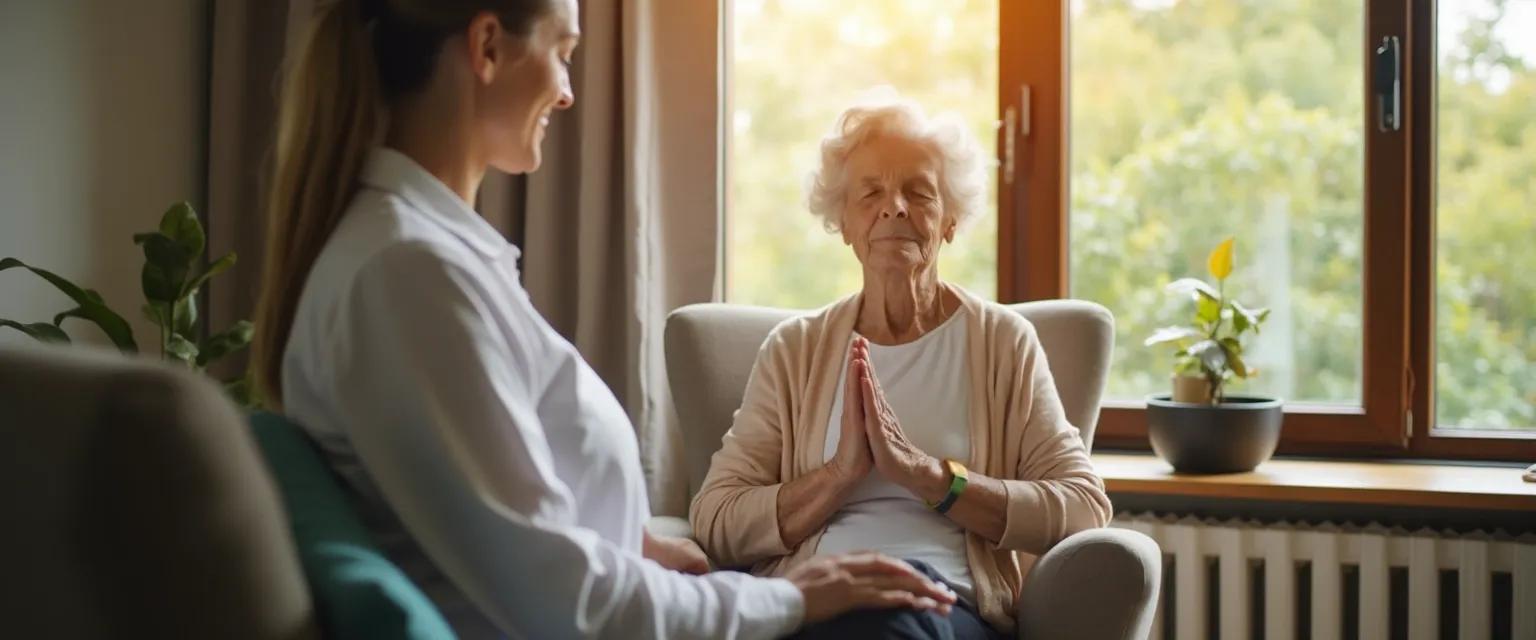Palouse Mindfulness Adaptations for Elderly Care: Caregiver Techniques
Bringing mindfulness practices to elderly care settings creates unique challenges that require thoughtful adaptation. Palousemindfulness, a free, evidence-based program developed by Dr. Dave Potter, offers excellent techniques that caregivers can modify for seniors with varying abilities. This approach to mindfulness combines elements of Mindfulness-Based Stress Reduction (MBSR) with accessible online resources, making it particularly valuable for eldercare settings where traditional programs might be difficult to implement.
Recent studies show that adapted mindfulness practices can reduce anxiety by up to 43% in older adults and improve sleep quality by 37%. These anxiety management techniques become even more effective when tailored to accommodate the specific needs of elderly individuals. The palousemindfulness guide we're exploring today offers practical modifications that maintain the core benefits while addressing mobility limitations and cognitive considerations common among older adults.
When implementing palousemindfulness with elderly patients, setting realistic expectations is crucial. Progress often appears differently than it might with younger practitioners, with small improvements in daily comfort and emotional regulation representing significant victories.
Essential Palousemindfulness Adaptations for Limited Mobility
The beauty of palousemindfulness techniques lies in their flexibility. For seniors with mobility restrictions, chair-based adaptations maintain the integrity of the practice while ensuring comfort and safety. The body scan, a cornerstone of palousemindfulness, works exceptionally well from a seated position.
Chair-based Body Scans
When guiding seniors through a palousemindfulness body scan, use a supportive chair and encourage them to find a comfortable, stable position. Unlike traditional practices that might involve lying down, this seated variation focuses attention sequentially from feet to head while maintaining proper support. Caregivers should use clear, gentle prompts and allow extra time between instructions.
For those with significant mobility issues, micro-mindfulness practices offer accessible entry points. These brief moments of awareness can be integrated into daily routines like mealtime, medication schedules, or physical therapy sessions.
Simplified Breathing Practices
The palousemindfulness breathing exercises benefit from simplification when working with elderly populations. Rather than complex breath counts or patterns, focus on simple awareness of natural breathing. Start with just 2-3 minutes of gentle attention to the breath, gradually extending practice time as comfort and capacity increase.
For effective palousemindfulness implementation, consider shortening practice durations to 5-10 minutes initially. This accommodates potentially limited attention spans while still delivering meaningful benefits. Many caregivers report that consistent brief sessions prove more beneficial than occasional longer ones.
Palousemindfulness Approaches for Cognitive Considerations
When cognitive changes are present, palousemindfulness strategies require thoughtful adaptation. The key is simplifying instructions without diminishing the practice's essence. Break down palousemindfulness exercises into clear, single-step instructions, using concise language and gentle repetition.
Visual Mindfulness Cues
Visual aids significantly enhance palousemindfulness practice for elderly individuals with cognitive challenges. Consider creating simple picture cards illustrating basic postures or breathing techniques. Objects like feathers for breath awareness or smooth stones for tactile grounding serve as powerful anchors for wandering attention.
The best palousemindfulness tips for cognitive support involve consistent environmental cues. Designate a specific chair or corner as the "mindfulness spot" and use the same background music or opening ritual to signal practice time. These confidence-building routines create a sense of familiarity that supports engagement, even when memory is compromised.
Consistent Practice Routines
Establishing a regular schedule for palousemindfulness practice helps build it into the care routine. Morning sessions often work well, taking advantage of typically higher energy and clarity earlier in the day. Keep sessions brief but consistent, focusing on quality of experience rather than duration.
Measuring Success with Palousemindfulness in Elder Care
Traditional metrics for palousemindfulness progress may not apply directly to elderly care settings. Instead, look for subtle indicators: improved sleep patterns, reduced agitation during care procedures, increased engagement in social activities, or decreased anxiety symptoms.
Simple assessment tools like mood scales using faces or colors can help track emotional changes. Caregivers should document observations systematically, noting patterns rather than isolated incidents. Remember that palousemindfulness benefits often manifest gradually in elderly populations, with seemingly small improvements representing significant progress.
The journey of implementing palousemindfulness in elderly care settings requires patience and creativity. By thoughtfully adapting these evidence-based techniques to accommodate physical limitations and cognitive considerations, caregivers create meaningful opportunities for comfort, connection, and improved quality of life. The palousemindfulness program's flexibility makes it an ideal foundation for developing mindfulness practices that truly serve our elderly population's unique needs.




